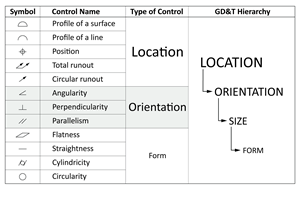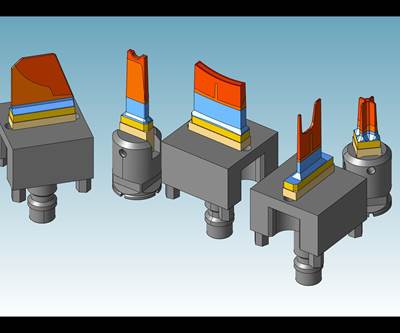Reducing Risk to Implement CAM Software Successfully
Following a training and implementation period, new software technology can provide a strong return to the business and be key to long-term success.
Every new technology has a learning curve. For example, properly implementing CAM software poses challenges. When the implementation is done improperly, it can hinder a shop from moving forward technologically. If unable to navigate the implementation, the shop owner faces potential stagnation by staying with existing technology. These challenges are more prevalent in small and medium-sized shops that may not have the formal business processes and labor support to manage the transition to new technology easily. However, shops can overcome these challenges.
New software technology implementation requires management support, out-of-pocket costs and labor planning. The shop should manage and track this implementation as another project, requiring labor and machine allocation. In the short term, a loss of billable time from the machine tool is possible. The owner should only move forward with new software implementation if he or she can realize a return on investment over a defined period. Large capital investment may require a return that is measured in a few months or as long as a few years. Smaller items or more focused productivity improvements can sometimes generate ROI over one subsequent project.
Also, shops can attribute labor savings or machine savings to fundamental components of cost recapture. Other savings and return to the business may be from shorter delivery times or larger part volumes, the ability to win more orders and the ability to win more complex orders that come with higher shop rates.
New software technology implementation requires management support, out-of-pocket costs and labor planning.
Reducing Risk
Ultimately, risk is the key factor to manage during a transition. Risk is associated with unknown variables or those that are hard to measure. Risk can lead to indecision. For a business plan with a projected return on investment, reducing risk can be identified by asking, “What is the probability that shop will achieve the business plan?”
Here are some pointers for reducing risk:
- Plan for sufficient training. This can be standard classroom training or e-training, but often, hands-on custom training will have a more direct impact.
- Enable workers to use new software. Consider uninstalling the previous software program—even if temporarily—to give the programmer a clear management statement to support the workflow change.
- Focus the implementation on manageable tasks. Start with one project on one machine, and with one or two employees. Later, expand on the best approaches for the entire shop.
- Build long-term support structures. This includes a tool database and a programming macro database. Look for other opportunities to automate regular tasks. This will save time on future work and instill a culture of adhering to work standards.
- Acknowledge the risk of post-processor development and implementation. Not all post-processor suppliers are the same. Find a software developer whose process is supported by a pool of similar successful implementations. Seek a test of the machine performance. Define change requests as functional or cosmetic. Test in all conditions, including 2D, 3D, indexing, five-axis, canned cycles, turning and so on.
- Use machine simulation to ease implementation. It can be a means to confirm new processes without tying up machining production.
While the short-term solution may favor maintaining the status quo or adding new, trained staff on the current software product, the best long-term answer is often to invoke change. Following a training and implementation period, new software technology can provide a strong return to the business and be key to long-term success.
The best long-term answer is often to invoke change.
About the Contributor
Alan Levine
Alan Levine is managing director of Open Mind Technologies USA Inc.
Related Content
Tolerancing in Mold Design, Part 2: Using GD&T to Address Conventional Tolerancing Issues
Mold designers can achieve a single interpretation of workpiece functionality when following the American Society of Mechanical Engineers Geometric Dimensioning and Tolerancing standard.
Read MoreMoldMaking Technology's Most-Viewed Content 2022: Products
MMT shares the five top-viewed technologies, equipment and services of 2022 in each Engineer, Build, Maintain and Manage tenet based on Google Analytics.
Read MoreMold Design Review: The Complete Checklist
Gerardo (Jerry) Miranda III, former global tooling manager for Oakley sunglasses, reshares his complete mold design checklist, an essential part of the product time and cost-to-market process.
Read MoreMold Innovations Power Unique Auto Lighting Elements on Hummer EVs
Diamond machining, electroforming of micro-optical inserts and modified latch-lock system help injection molds produce unique forward lighting elements.
Read MoreRead Next
CAD Software Automates Die-Sinking Electrode Manufacturing
Advanced CAD/CAM software with dedicated electrode design capabilities greatly reduces electrode design, modeling and manufacturing time.
Read MoreHow to Use Strategic Planning Tools, Data to Manage the Human Side of Business
Q&A with Marion Wells, MMT EAB member and founder of Human Asset Management.
Read MoreHow to Use Continuing Education to Remain Competitive in Moldmaking
Continued training helps moldmakers make tooling decisions and properly use the latest cutting tool to efficiently machine high-quality molds.
Read More












_300x250 1.png;maxWidth=300;quality=90)

.jpg;maxWidth=300;quality=90)










.jpg;maxWidth=970;quality=90)